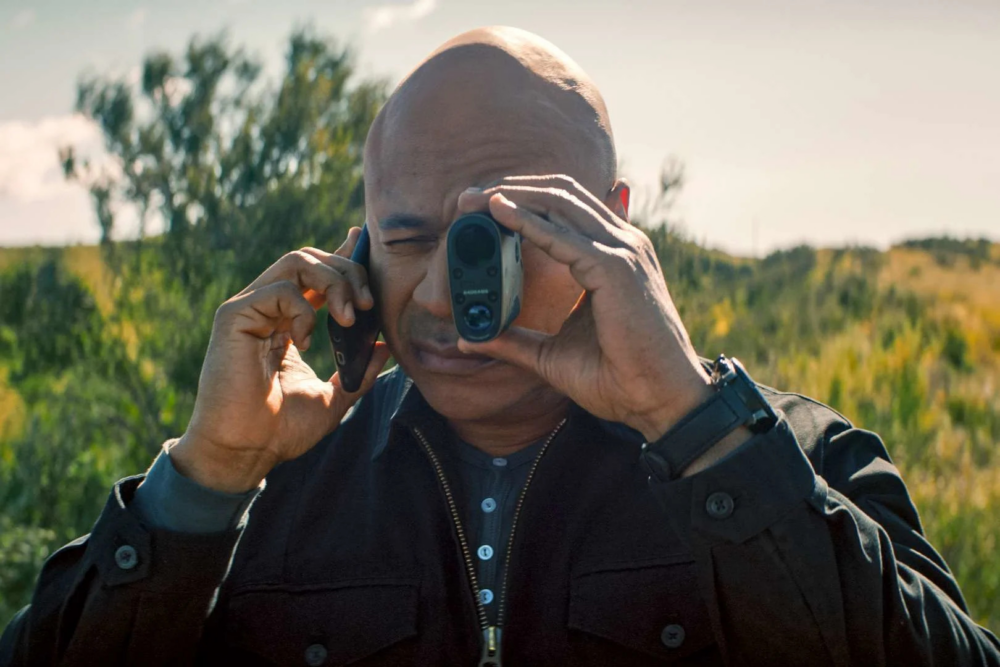
Coming up on a year since NCIS: Los Angeles’ swan song, Daniela Ruah pulls double duty this Monday, April 15, during CBS‘ NCIS line-up.
First up, Ruah reprises her role as Special Agent Kensi Deeks (via an MTAC video conference) during the NCIS franchise’s milestone 1,000th episode, which airs at 9/8c as an episode of NCIS. Then at 10 pm that night, you have the NCIS: Hawai’i episode “The Next Thousand,” which Ruah directed. (Ruah previously directed a half-dozen NCIS: LA episodes, as well as the recent NCIS episode about a kidnapped fiancé.)
TVLine hopped on the phone with Ruah to ask our No. 1 burning question about her NCIS “1,000” cameo, and then talk up her helming of the NCIS: Hawai’i episode about a U.S. Army SERE (Survival, Evasion, Resistance and Escape) training exercise on the Big Island that turns extremely deadly.
Related Stories
how-to-watch-billy-joel-concert-live-online-free-streaming
Billy Joel 100th Concert Special: How to Stream the Performance Online
Fire Country Sheriff Spinoff Episode
Fire Country Poll: Would You Watch a Sheriff Mickey Fox Spinoff?
TVLINE | First of all, because Kensi dials into MTAC from her car during the NCIS franchise’s 1,000th episode, I need to know: Did you film your scene while you were in a drop-off line?
[Laughs] No, I actually filmed that while I was directing in Hawaii. They were like, “Can we fit this into your schedule?” and we were like, “Well, we can’t make it look like I’m in Hawaii.” So, we had to go back and look at pictures of what Kensi’s car looked like to try and get something as similar as possible, to look like Kensi is in her car. I couldn’t even remember, to be honest with you, what brand she drove — I was so immersed in the Hawaii episode – but listen, I wouldn’t have it any other way. To be invited to be a part of the 1,000th episode was such an honor. It’s too big of a deal.

NCIS 1000th Episode Date Casting News
NCIS Franchise Episode 1000: Everything We Know
VIEW LIST
TVLINE | Turning to NCIS: Hawai’i, the episode they gave you to direct is crazy intense. Once you saw what it was going to be, were you charged up?
First of all, the fact that all three showrunners wrote it, Jan [Nash], Matt [Bosack] and Chris [Silber], that right there tells you that there’s probably going to be, you know, a little more craziness, or it’ll be more out-of-the-box. I don’t know why, but I always perceive that when a showrunner writes something, they get extra creative.
They [set the action] on the Big Island, and while we unfortunately couldn’t actually shoot there, it definitely made for pursuing different landscapes than what we’ve seen before on the show. And then, of course, there’s diving into Vanessa [Lachey]’s character’s backstory and that trauma…. I cannot begin to tell you how incredible the entire cast was; specifically Vanessa, because she had all that digging within her to go into, and she was such a ball player. She was like, “Let’s explore this together.” But everybody, they were all so game to try different things. And also, we went into a really dark place in terms of the case itself. The show has never dealt with [spoiler] before, and they really went there.
Alex Tarrant, Noah Mills and guest star Sean Carrigan
TVLINE | I think about the specific challenges that this episode must have presented you as director, and not only is almost all of it outdoors, but it’s in the jungle. Did you have to learn anything new in that respect?
Yeah — wear long pants and long sleeves, and bring mosquito spray. [Laughs] No, every time I direct something, even if it was still on [NCIS: LA], you’re always learning new things. Here I’m working with a new crew, with a new director of photography, so everybody’s going to teach you new things. Even stunts — when Tennant gets [spoiler], they said, “Here are things that we could do…,” which then allowed me to get creative with the way it was shot.
I’ve got to say that shooting in a place like a jungle actually ends up being an advantage because you have all this natural, beautiful production value, and it just really enriches the imagery of the scenes. For example, we had to get creative with where you see the volcanic rock area, which is really barren compared to the jungle that we’d just come out of, and even though in nature that’s just how it works. It’s like, one minute you’re in greenery, and one minute, you’re on rock. So, we had to get creative in how we put some plants down on the floor and added some things, so you can understand that transition.
TVLINE | My next question was actually going to ask, where was that area of volcanic rock? Because it made for some stunning shots.
That’s a place called the Lānaʻi Lookout — and there’s water right behind those rocks. I mean, we were literally on the ocean, so we had to adjust the camera angles to hide the water. Like, you shoot one inch to the l